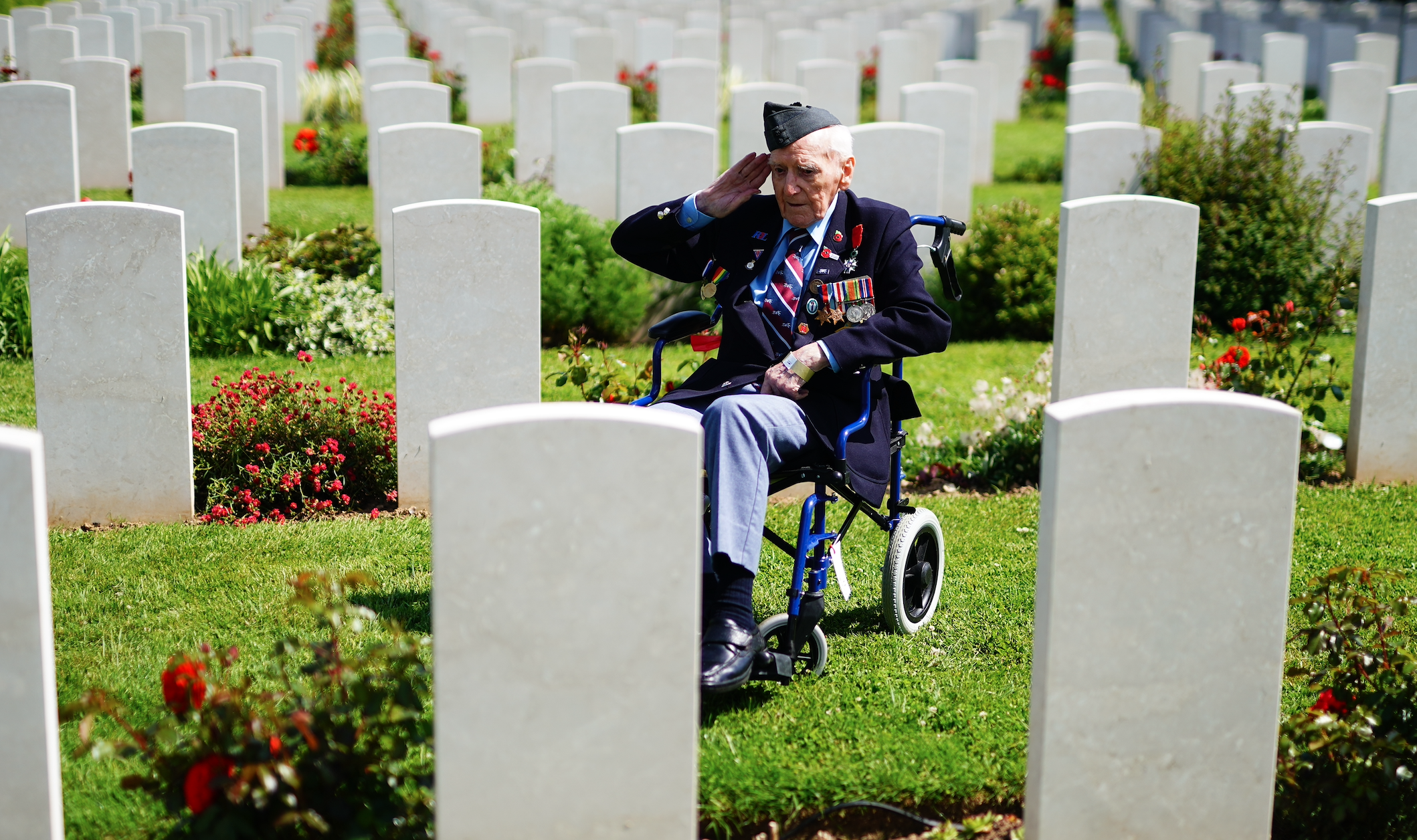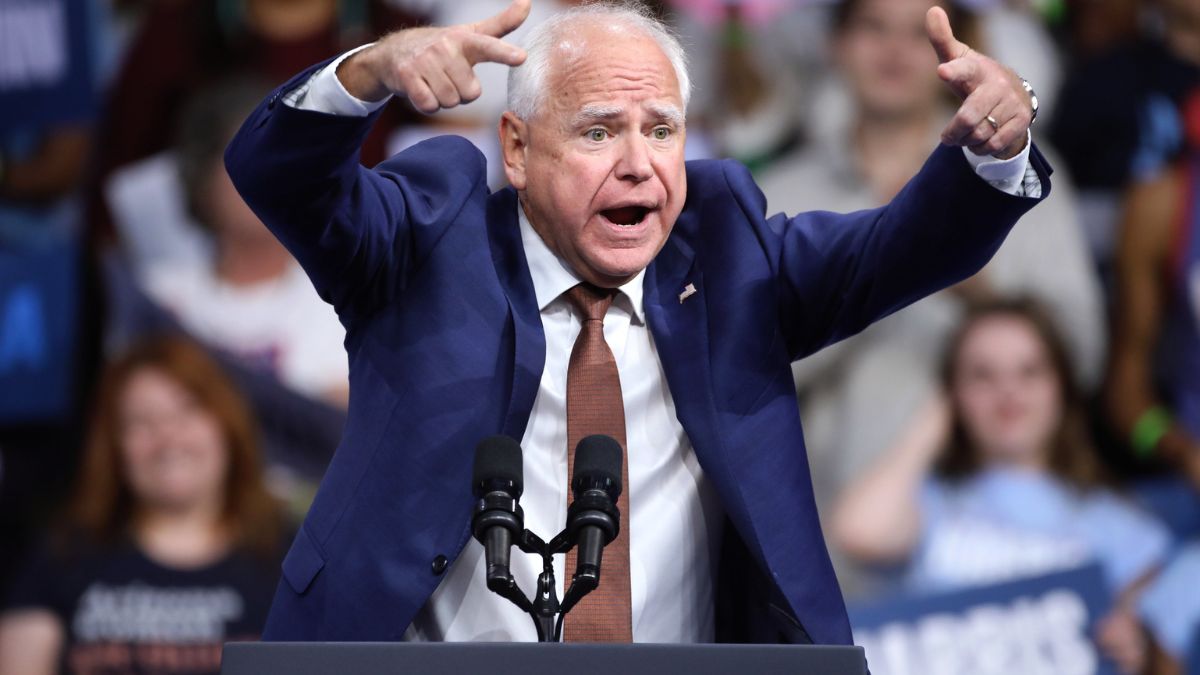
This article was originally published on American Conservative. You can read the original article HERE

Some 2,500 American soldiers died on D-Day, June 6, 1944, precisely 80 years ago today. It was the pivotal day in a pivotal war for America, the necessary victory to secure a European beachhead at Normandy from which to press forward and destroy German fascism and its war machine. And, not coincidentally, to establish America’s global preeminence. As Winston Churchill observed at war’s end, “The United States stands at the summit of the world.”
June 6 is a good day in any year to pause in contemplation of the significance of that day in the context of that war and its outcome. This usually focuses primarily on the valor and fortitude of the men who fought and died there. A heart-rending symbol of America’s European war sacrifice, on D-Day and later, lies in the white marble headstones—mostly Christian crosses but some denoting other religions as well—stretching in long rows over much of the 172-acre Normandy American Cemetery. The rows of marble honor 9,388 Americans who died for their country on European soil.
More particular to D-Day itself is the excruciatingly vivid Omaha Beach landing scene in Steven Spielberg’s magisterial film, Saving Private Ryan. That one scene, employing more than 1,500 extras and costing some $12 million to shoot, brings to life all the human elements that emerge as young men face a strong likelihood of imminent death—the vomiting as the landing craft nears the beach, a young officer’s quivering hands, soldiers kissing crucifixes in a silent plea for survival. Then comes the mad, chaotic scramble into the water and onto the beach under intense fire, blood splattering everywhere, mutilated bodies piling up, medics overwhelmed by the magnitude of the carnage, crimson waves washing ashore. Spielberg held little regard for dainty sensibilities in portraying the grit and gore of combat, contributing to the nation’s reverential awe over the heroic sacrifices of those men 80 years ago.
But a full recognition of D-Day heroism extends beyond the troops to the leaders and planners of Operation Overlord, as the invasion was code-named. These were the men who fashioned the tactical concepts of the gigantic undertaking and then successfully carried them out. The night before, General Dwight Eisenhower, Supreme Allied Commander, drafted the statement he would deliver to the world in the event of failure. His military personnel, he said, “did all that bravery and devotion to duty could do. If any blame or fault attaches to the attempt it is mine alone.”
That was the kind of selflessness and acceptance of responsibility that seems to have been more in evidence in those days than they are today. Eisenhower and his men faced a vexing challenge in crafting their plan. Such a landing invasion, to prevail, normally would require a 3-to-2 ratio in troop strength. But the Allies couldn’t muster such a magnitude of troops, and thus the venture had to rely on three key tactical concepts—deception; air-power supremacy; and sufficient time following the landing to organize the troops into an effective fighting force.
Deception was designed primarily to raise questions among enemy leaders as to when and where the attack would come, thus dividing and delaying the enemy and “reducing his effective strength at the point of attack,” as Stanford historian David M. Kennedy explained in his history of the FDR years, Freedom From Fear. Allied leaders also calculated that they could employ air supremacy to isolate the battlefield and thus thwart German reinforcement and resupply efforts. All this was designed to buy the time needed to “blast our way ashore,” as British general Bernard Montgomery explained it, “and get a good lodgement before the enemy can bring sufficient reserves up to turn us out.”
The concept worked, with nearly 100,000 Allied troops getting ashore before nightfall on D-Day. But it was a near thing, and the push inland stalled through much of June when German counterattacks stymied British efforts to push forward at Caen, a port city some 15 kilometers inland from the French coast, and also slowed a crucial American initiative. Ultimately, the logjams were broken, allowing Allied forces to push back against the German Wehrmacht. U.S. general Omar Bradley later recalled, though, that the Allies “faced a real danger of a World War I–type stalemate in Normandy.”
All in all, Operation Overlord became, as David Kennedy wrote, “the long awaited mother of battles and perhaps history’s most prolific womb of war stories”—in other words, a symbol of American power, ingenuity, cohesion, audacity, and industrial supremacy, to be noted with pride on every subsequent June 6.
The wartime industrial spree alone represented a “fantastic statistical litany” (Kennedy’s words): 5,777 merchant ships, 1,556 naval vessels, 299,293 aircraft, 634,569 jeeps, 88,410 tanks, 6.5 million rifles and 40 billion bullets. No other nation upon the globe could approach such an explosive industrial output of martial machinery. And that certainly contributed to the D-Day victory.
Subscribe Today
Get daily emails in your inbox
And after the war the United States stood as a global colossus, as Churchill had perceived, holding two thirds of the world’s gold stocks and half of its monetary reserves, accounting for half of the globe’s industrial capacity, dominating such crucial new industries as electronics and aerospace, and controlling the world’s greatest merchant fleet. All this contributed to a surge of postwar economic expansion that generated some 20 million jobs in just 25 years and gave middle class status to nearly two thirds of all Americans. Home ownership soared to unprecedented levels.
It’s not often expressed explicitly, but D-Day symbolizes America’s can-do spirit as exemplified by Tom Brokaw’s “greatest generation.” The greatest generation is mostly gone now, and the country’s can-do spirit seems to have departed with it. America is no longer an industrial powerhouse, certainly ill-prepared for the kind of production blitz that contributed to the World War II victory. It has engaged in multiple foreign wars since the 9/11 attacks and has distinguished itself in none of them. Sustained economic growth has eluded policymakers for nearly two decades. FDR’s old working class constituency has been devastated. No longer a cohesive nation, America struggles with civic frictions that are tearing it apart. And the political establishment seems incapable of bringing forth presidential candidates who seem capable of addressing, much less ameliorating, the persistent ills of the nation.
So, yes, we should honor the D-Day sacrifices and successes of 80 years ago with appropriate appreciation, patriotism and reverence. But it might be an occasion also to ponder what went wrong in America after the heady Cold War victory of 1989–91 and how the country might recapture the vigor, unity and surefootedness of what might be called the D-Day era.
This article was originally published by American Conservative. We only curate news from sources that align with the core values of our intended conservative audience. If you like the news you read here we encourage you to utilize the original sources for even more great news and opinions you can trust!










Comments